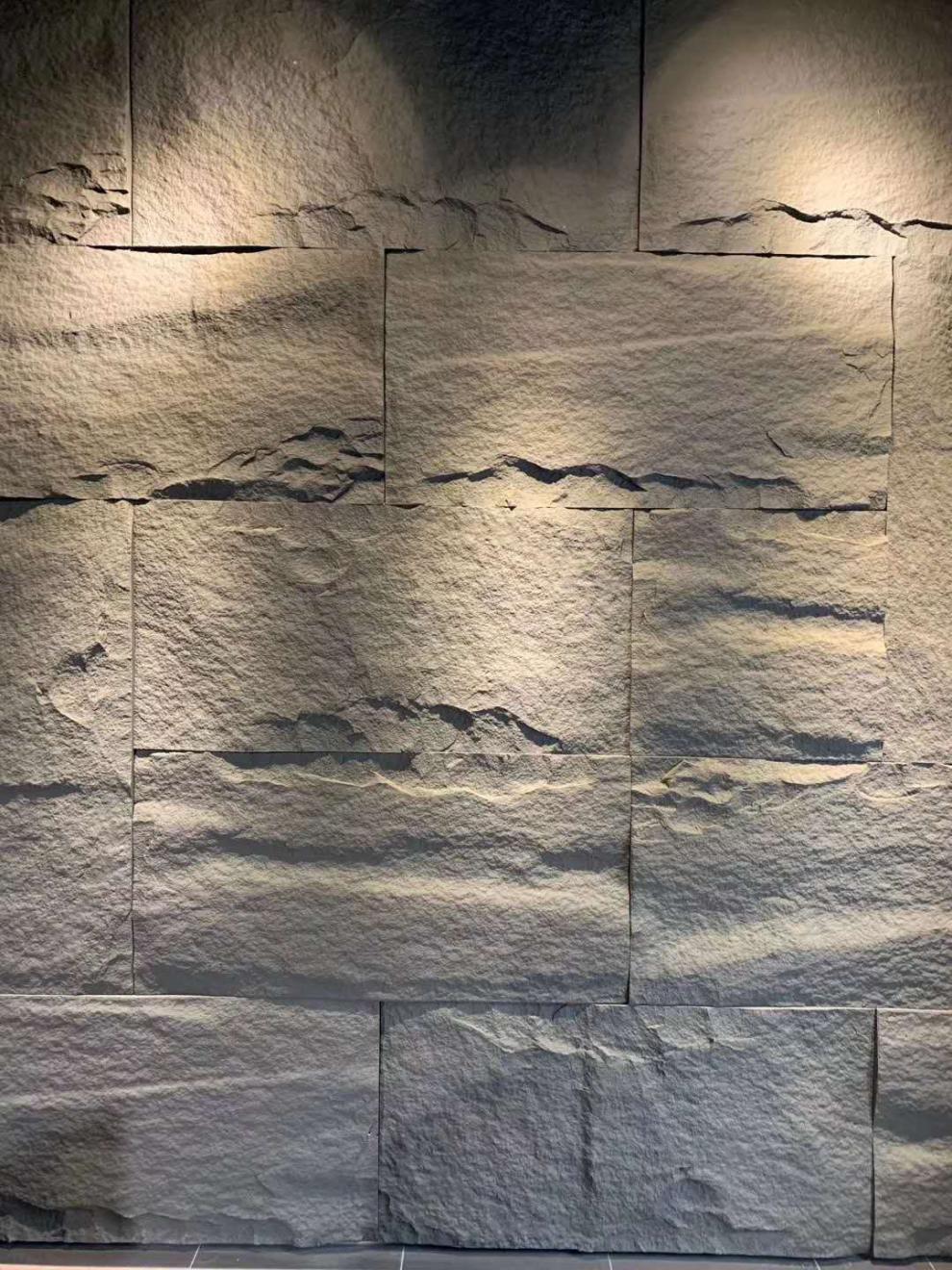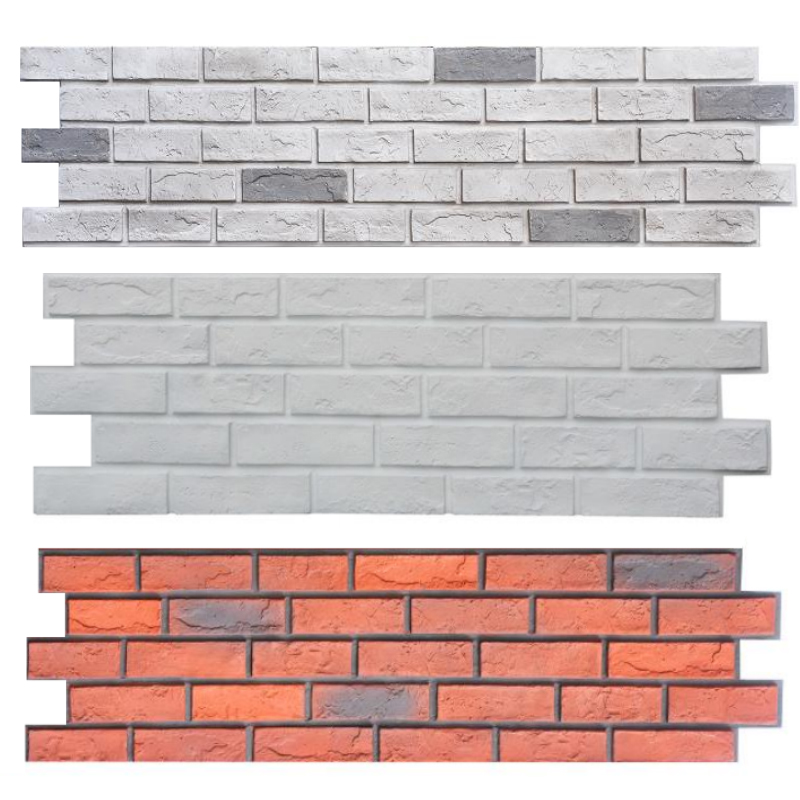Polyurethane Faux Stone: A Perfect Blend of Beauty and Innovation
The selection of traditional building materials has always been a critical consideration in the field of architecture. However, with the continuous advancement of technology, new materials are revolutionizing the way we build in unprecedented ways. Among these, polyurethane faux stone stands out as an innovative and impressive building material that is gradually gaining recognition. Let’s explore the differences between polyurethane faux stone and traditional building materials and provide a purchasing guide to assist you in making informed decisions.
Polyurethane Faux Stone VS Traditional Building Materials
- Appearance and Texture: Polyurethane cultured stone is awe-inspiring with its diverse designs and textures. It can precisely mimic natural materials like stone, brick, wood, and more, while offering greater flexibility to cater to different styles and needs. Traditional building materials often lack such high levels of customization and innovation.
- Lightweight: Polyurethane cultured stone is relatively lightweight, making it easy to transport and install. This reduces labor costs and time, making construction projects more efficient.
- Durability: Polyurethane cultured stone exhibits exceptional durability, withstanding daily wear and tear, UV radiation, and adverse weather conditions. Traditional building materials may require more frequent maintenance and quicker replacement.
- Maintenance Costs: Compared to traditional materials, polyurethane faux stone has lower maintenance costs. Its surface is easy to clean, resistant to dust accumulation, and less susceptible to mold growth, maintaining aesthetics and hygiene.
- Environmental Friendliness: Polyurethane cultured stone typically aligns with environmentally friendly standards, reducing resource waste and energy consumption in its production processes.
- Convenience: The lightweight nature of polyurethane cultured stone makes transportation and installation more convenient. This can save time and labor costs, enhancing construction efficiency.
- Customization: Polyurethane faux stone offers a wide range of design and customization options to meet diverse project needs. You can choose from various colors, textures, and sizes to ensure that the cultured stone harmonizes with your project’s overall design. Traditional building materials often lack such a high degree of personalization.
- Versatility: Polyurethane faux stone is suitable for various applications, including interior decoration, exterior wall cladding, and flooring. Its versatility makes it applicable to different types of construction projects, whether residential, commercial, or public buildings.
- Cost-Effectiveness: Polyurethane cultured stone is often more cost-effective in terms of overall costs. While the initial purchase cost may be slightly higher than some traditional materials, long-term savings can be realized due to lower maintenance and longer lifespans.
- Environmental Sustainability: Compared to traditional stone or wood, the production of polyurethane cultured stone often reduces reliance on natural resources and minimizes adverse environmental impacts, making it an ideal choice for sustainable construction projects.
Purchasing Guide
When buying polyurethane cultured stone, it’s crucial to consider the following factors in detail to ensure you make the best choice for your project:
- Clearly Define Project Requirements: Before purchasing polyurethane faux stone, thoroughly understand your project requirements, including color, texture, size, and style. Consider whether the cultured stone will be used for interior decoration, outdoor landscaping, wall cladding, flooring, and more. Determine the desired aesthetics and functionality to ensure the cultured stone aligns with the overall design.
- Seek Reliable Suppliers: Look for experienced and reputable polyurethane cultured stone suppliers. You can do this through internet research, industry reputation, recommendations from builders, or word-of-mouth referrals. Examine their company background and track record to verify their ability to provide high-quality products and professional services.
- Request Samples: Before making a decision, insist on obtaining samples from the supplier. Samples will assist you in evaluating the cultured stone’s appearance, texture, and color, ensuring they align with your design vision. Check whether the samples exhibit the desired patterns, textures, and finishes to meet your aesthetic requirements.
- Understand Material Quality: Thoroughly understand the material quality of the selected polyurethane faux stone. Inquire about its composition, density, abrasion resistance, and weather resistance. Ensure that the chosen product exhibits excellent quality to withstand long-term use without damage or fading.
- Consider Maintenance Requirements: Understanding the maintenance needs of faux stone is critical. Some types may require more frequent upkeep, such as regular cleaning or sealing, while others may be more maintenance-friendly. Maintenance requirements should align with your project’s maintenance capacity and budget.
- Budget Planning: Develop a clear budget plan that includes the cost of purchasing cultured stone and installation expenses. Discuss pricing with the supplier and make sure your budget adequately covers all project costs. Additionally, account for additional expenses such as transportation, installation, and maintenance.
- Installation Services: If you are unfamiliar with the installation process of cultured stone, it’s highly recommended to hire professional installation services. Ensure that the installation team has experience and can guarantee the correct installation of faux stone to achieve the best results. Inquire whether the supplier offers installation services or can recommend a reliable installation team.
- Understanding Warranty Policies: Familiarize yourself with the warranty policies of the cultured stone, including warranty duration and coverage. This will help you understand your rights in case maintenance or replacement of cultured stone becomes necessary and how to seek support.
- Review Customer Reviews: Before making a decision, review customer testimonials and recommendations to gain insights into their purchasing experiences and the actual performance of cultured stone. Customer feedback can provide valuable information about the supplier and product quality.
- Comprehensive Consideration: Finally, consider all these factors holistically and align them with your project’s actual needs and budget. Ensure that your choice not only meets aesthetic requirements but also maintains performance and aesthetics over the long term.
By carefully considering these factors, you can select the most suitable polyurethane cultured stone for your project, ensuring its success and longevity in construction.
Post time: Sep-25-2023


